Fringetree, Chionanthus virginicus & Chionanthus retusus
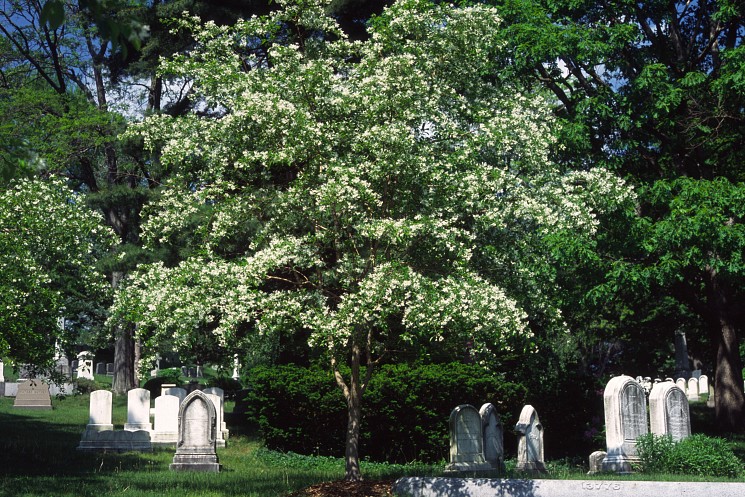
…And her gauzy garments fleet
Amy Lowell
Round her like a glittering sleet….
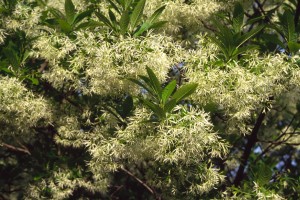
Fringetree, Chionanthus virginicus presents an outstanding spring-white, floral display. Douglas Peattie (1898-1964), in his 1948 classic book, A Natural History of Trees, expands on Lowell’s metaphorical couplet with, “…it is a raving beauty when in mid-spring it is loaded from top to bottom with the airiest, most ethereal yet showy flowers boasted by any member of our northern sylva. A faint sweet fragrance breathes subtly from the flowers.” William Cullina, in his 2002, Native Trees, Shrubs & Vines, essentially concurring with Peattie, states, “Every spring I am completely enchanted by this tree when it fluffs into flower. There are few more transcendent sights than its thick twigs hung with clouds of sweetly fragrant, delicate flowers like so much cotton or fleece.” Thirty years ago when I first started my focused look on these and other plants, these were early June bloomers. More recently we now can also enjoy these flowers in late-May, as well as in early-and-mid-June. The individual flowers usually have four (sometimes five) narrow, strap-like, one-inch-long petals. However, the fragrant flowers occur in great numbers, in six-to-eight-inch long, soft, fleecy, panicles.
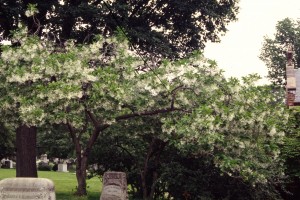
No less a plantsman than Michael Dirr, author of Manual of Woody Landscape Plants, adds his weighted opinion therein thusly, “I would like to make a case for this to be the national shrub for even dogwood does not carry itself with such refinement, dignity and class when in flower…”. The habit of this deciduous plant is either a large, multi-stemmed shrub, or a small tree, usually twelve-to-twenty-feet in height. Its native range is from southern Pennsylvania and New Jersey, south to northern Florida, and west to eastern Texas, southern Arkansas and Oklahoma. The genus name was given by Carl Linnaeus (1707-1778), Swedish botanist who is responsible for our system of binomial nomenclature. Chionanthus is derived directly from Greek for snowflower, chion meaning snow, and anthus meaning flower. Here at Mount Auburn, look for our Fringetrees, Chionanthus virginicus, on Vesper Avenue, Mimosa Path, Sedge Path and Coral Path.
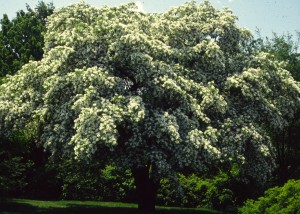
Chinese fringetree, Chionanthus retusus, is a disjunct Asian species, comparably beautiful in flower, and it rarely fails to attract attention when in blossom. The subtle, yet perceivable difference from C. virginicus, are flowers with slightly shorter and wider petals, and smaller, more lustrous, leathery-like leaves. Also, the fragrant flowers of Chinese fringetree occur on the current season’s stem growth, while that of C. virginicus occur on the previous season’s stems. This tends to provide a showier flowering effect with more flowers on the ends of stems, obscuring more of the leaves on Chinese fringetree. This species can be shrub-like, but more often may grow into a single-trunk tree. Native to China, Korea, Taiwan and Japan, this was first sent to European gardens in 1845 by Robert Fortune (1812-1880), Scottish botanist, plant explorer, and famously known for introducing tea plants from China into India, on behalf of the British East India Company. Both species are dioecious, having distinct male and female plants (although some produce bisexual flowers), so the attractive dark-blue fruit (drupe),one-third the size of an olive, which many species of birds feed on, generally only occurs on female plants, in late-September/October. Look for our Chinese fringetrees, Chionanthus retusus on Larch Avenue, Acanthus Path, Story Road and Andromeda Path.
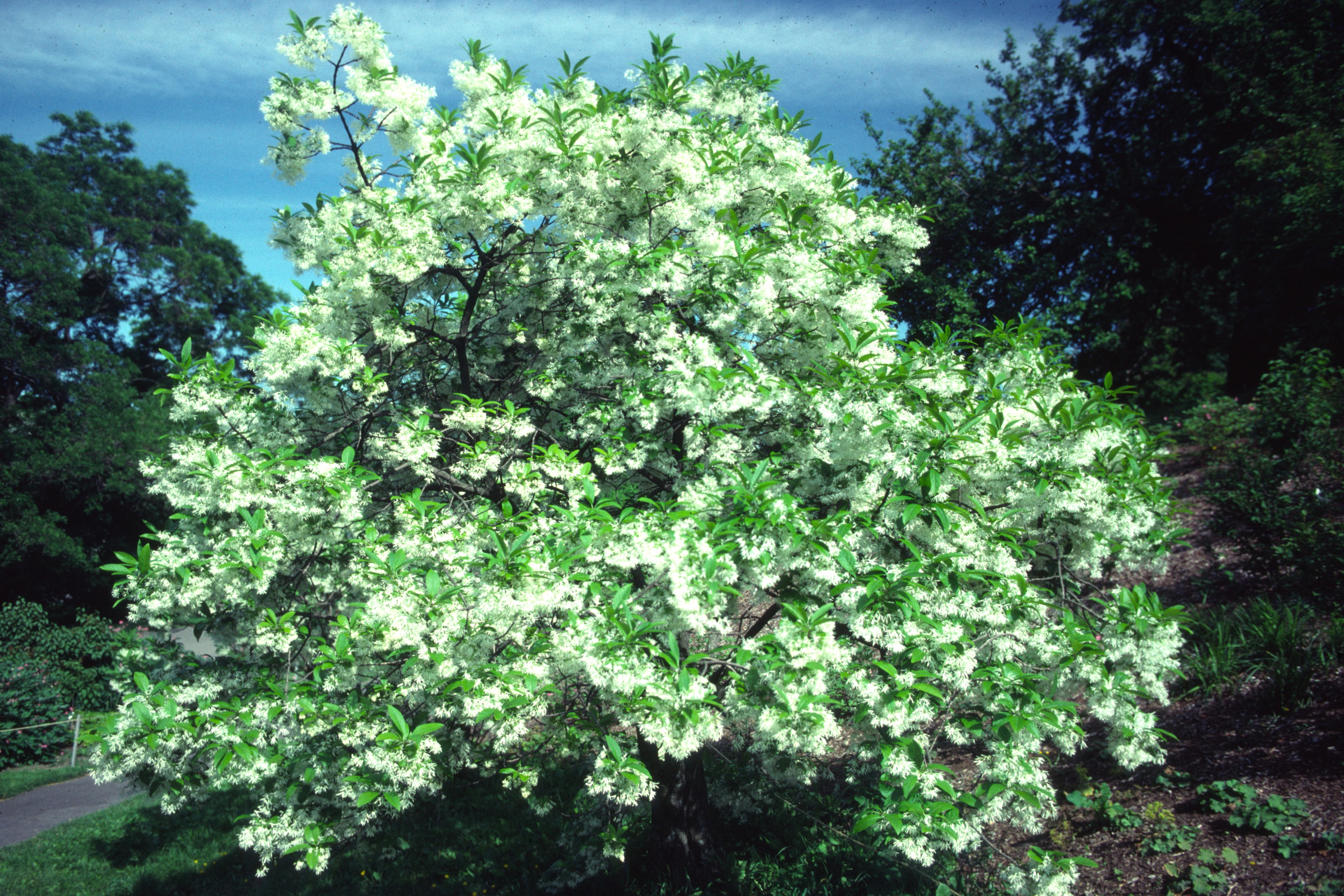
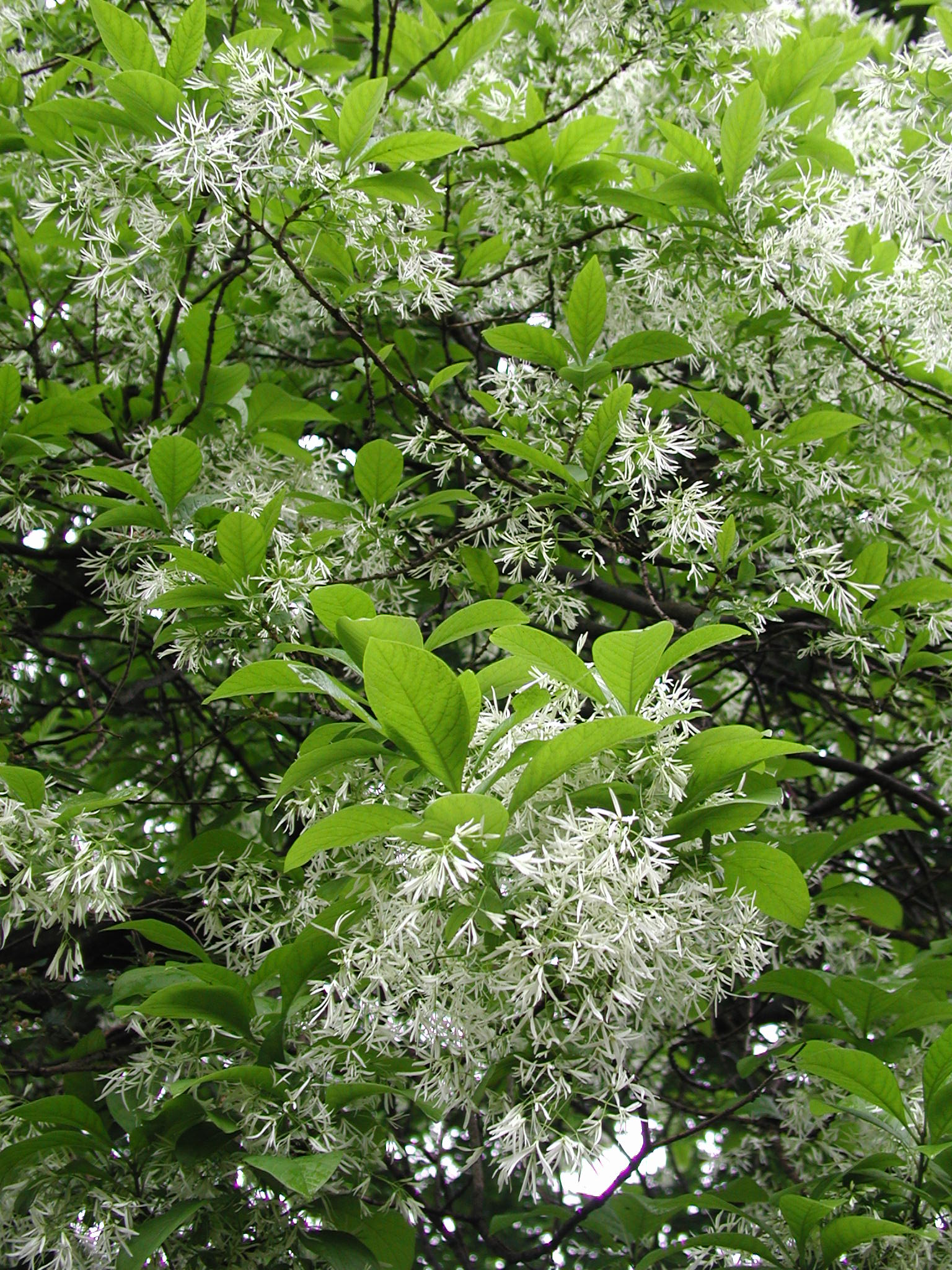
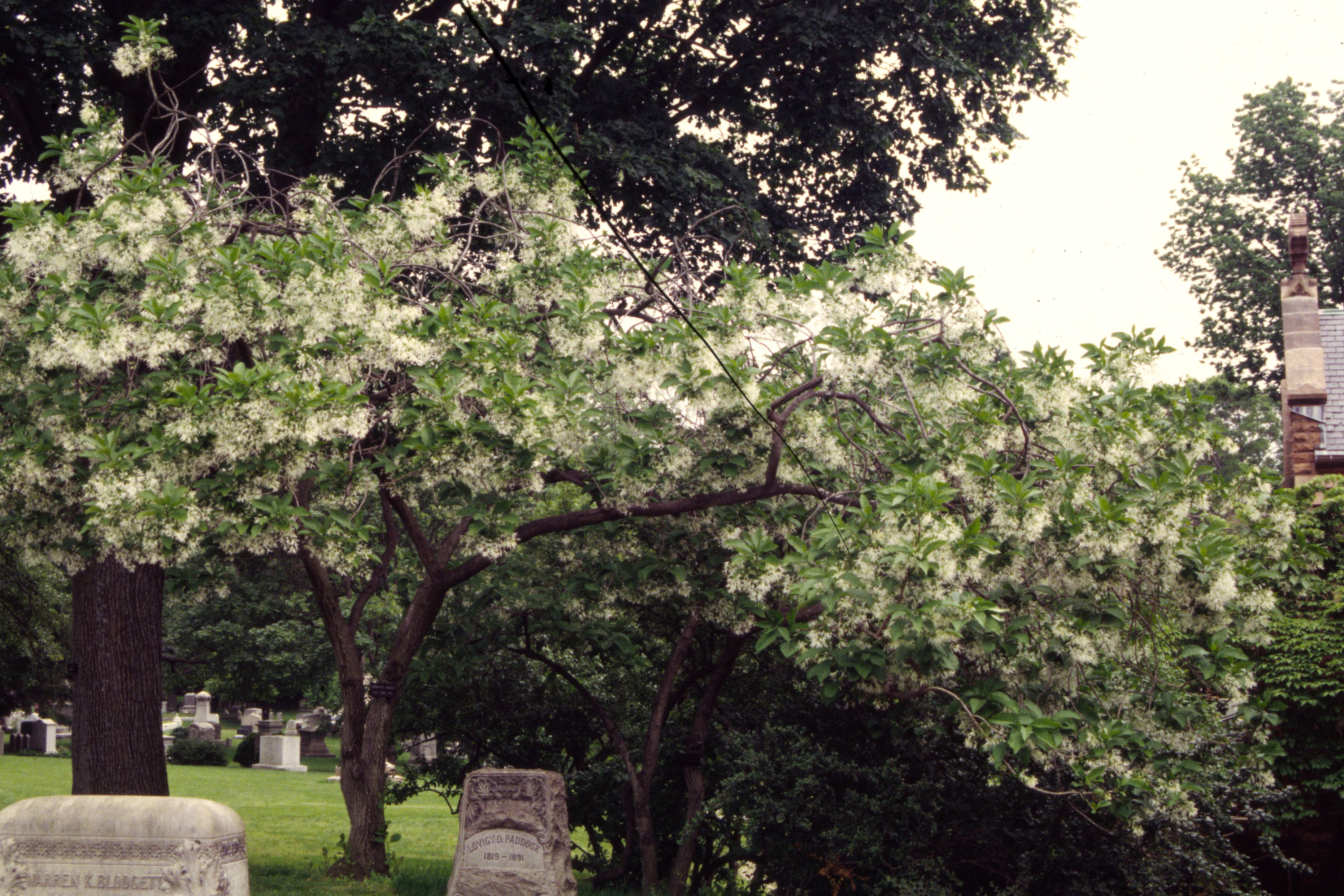
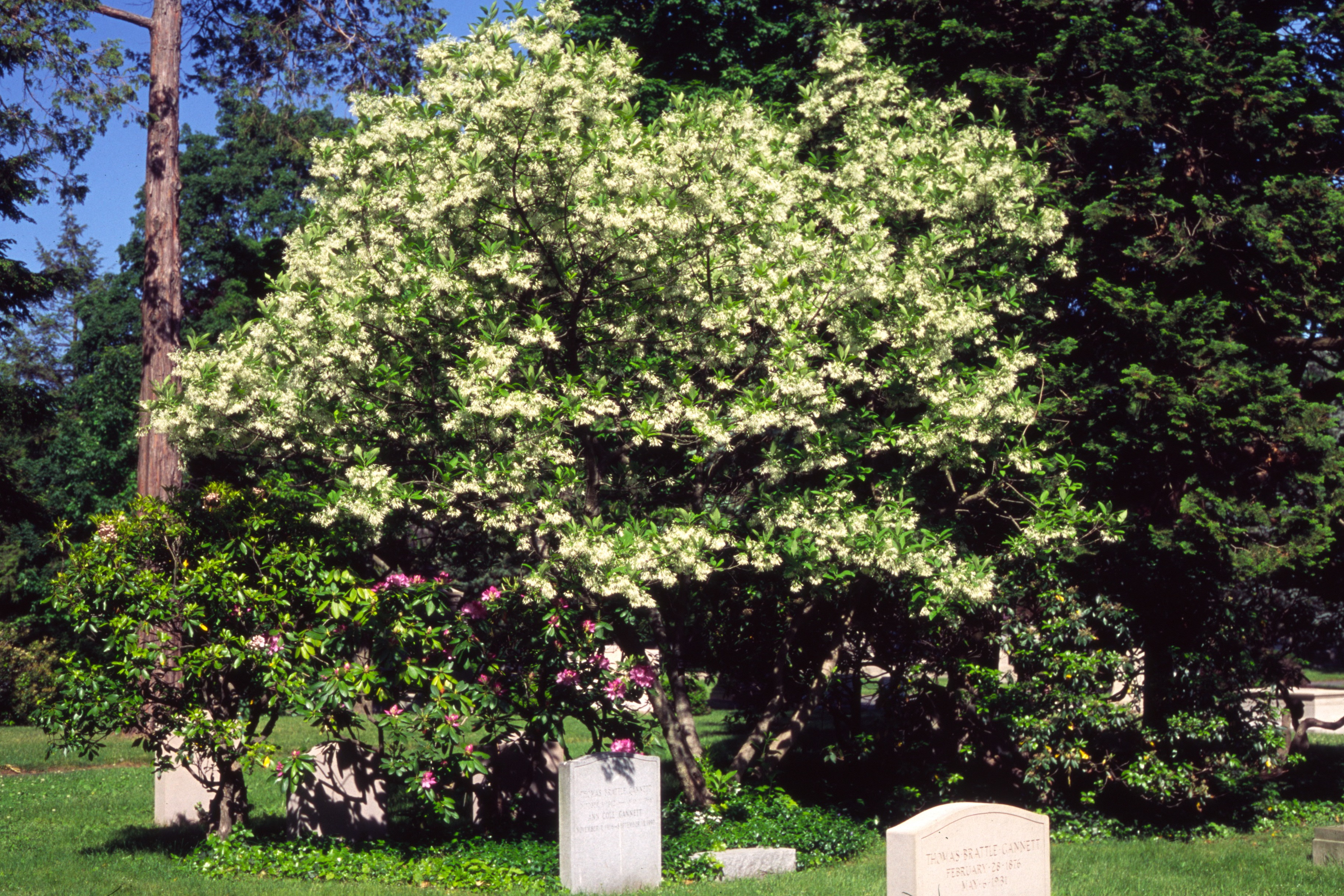


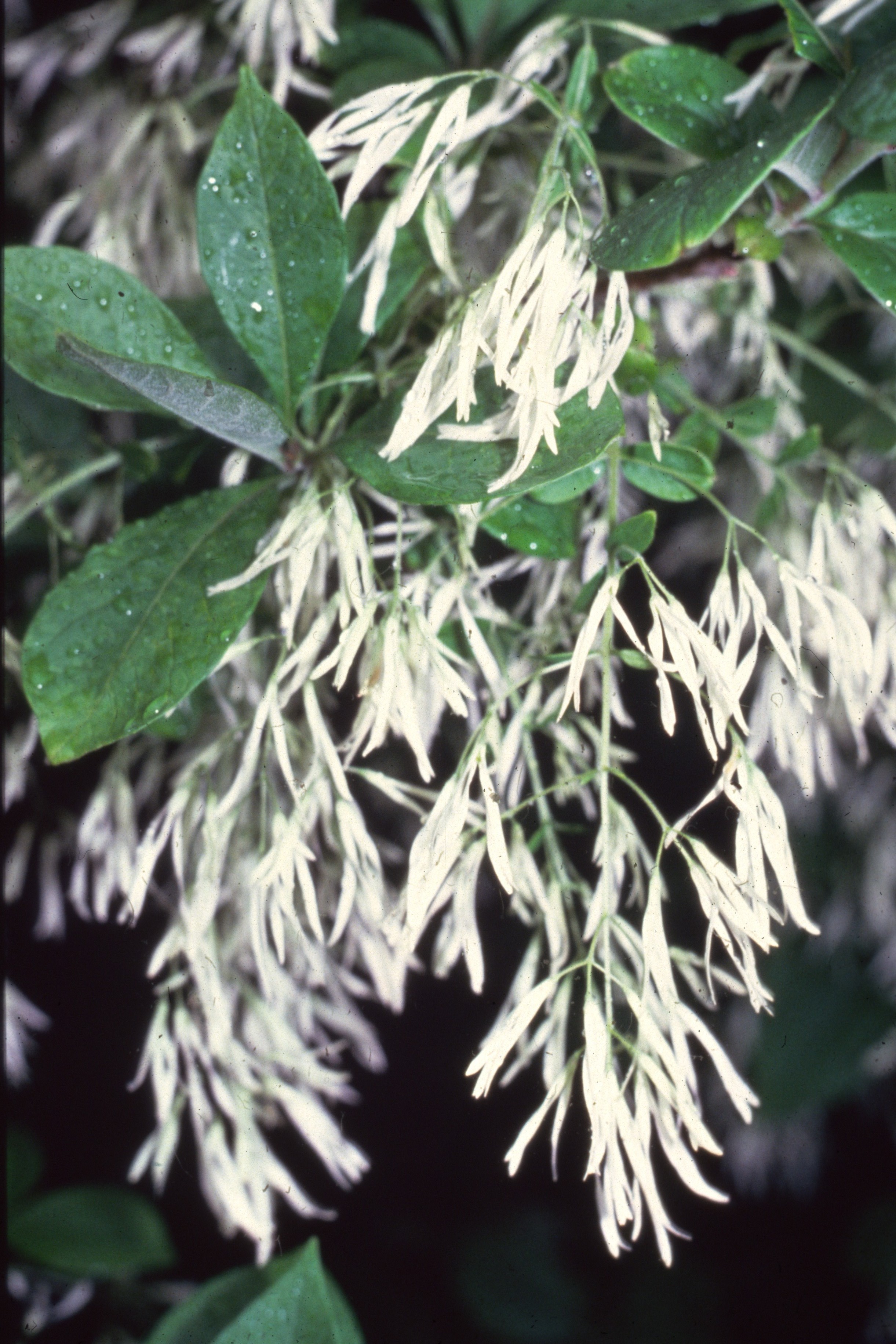
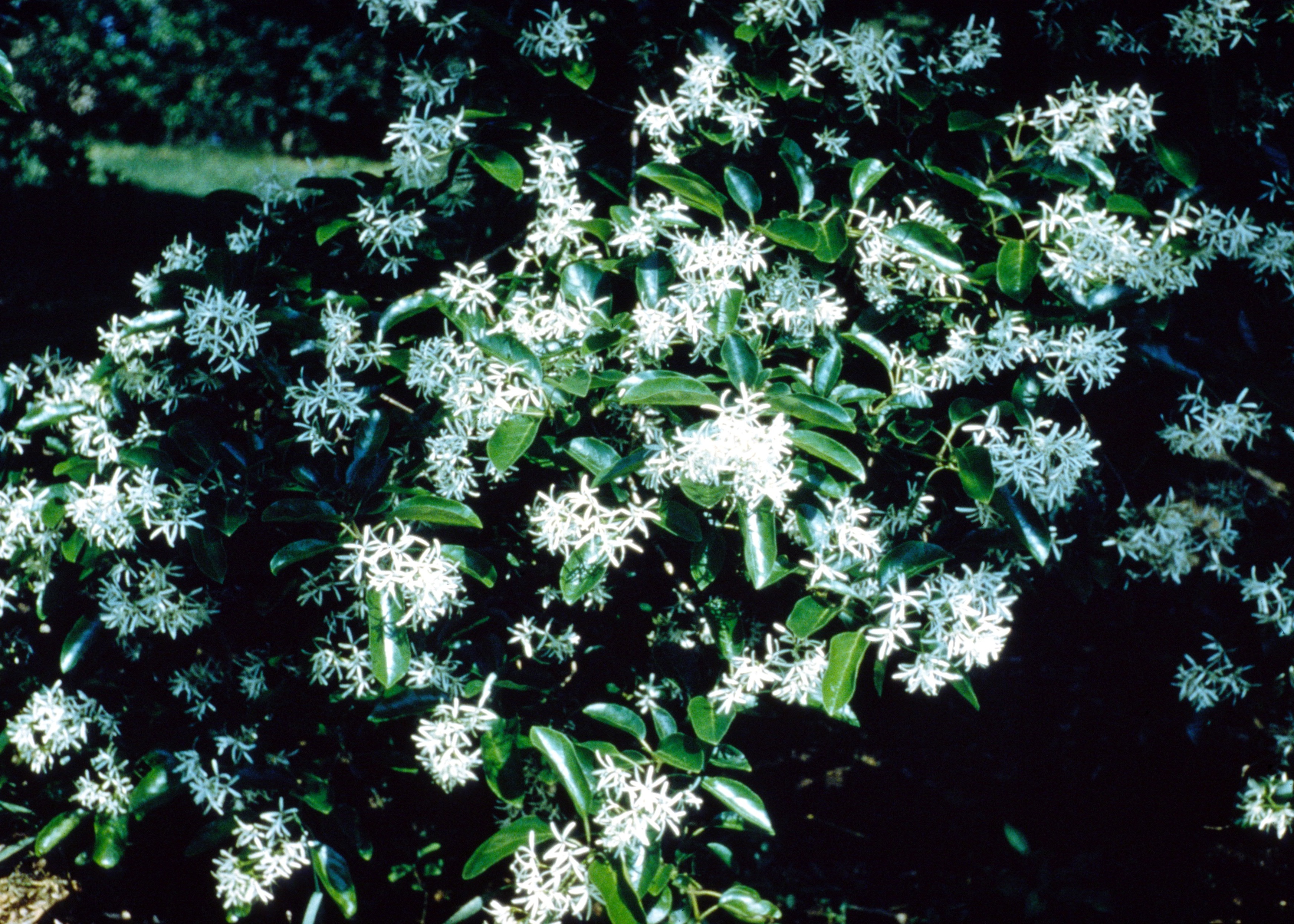
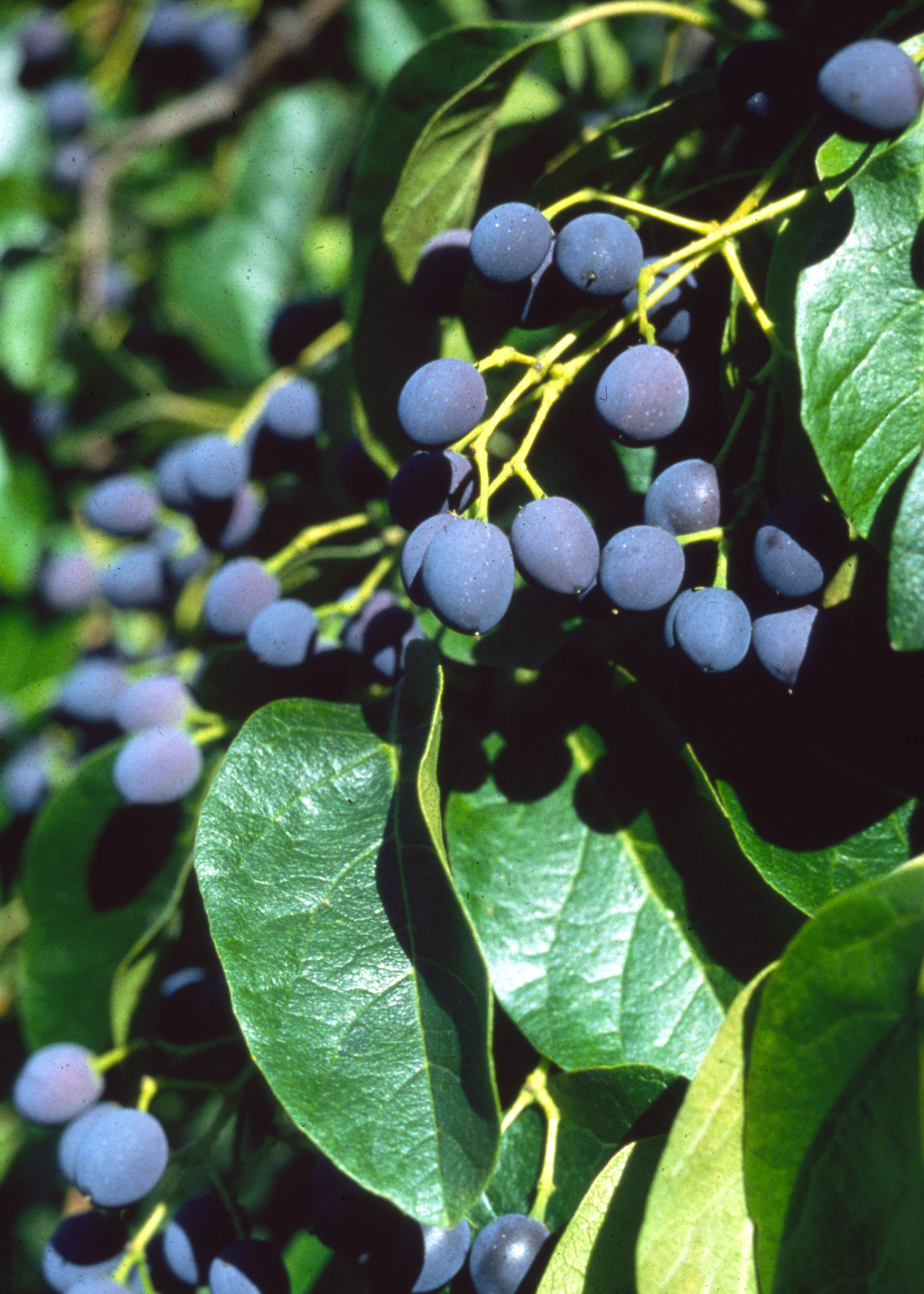

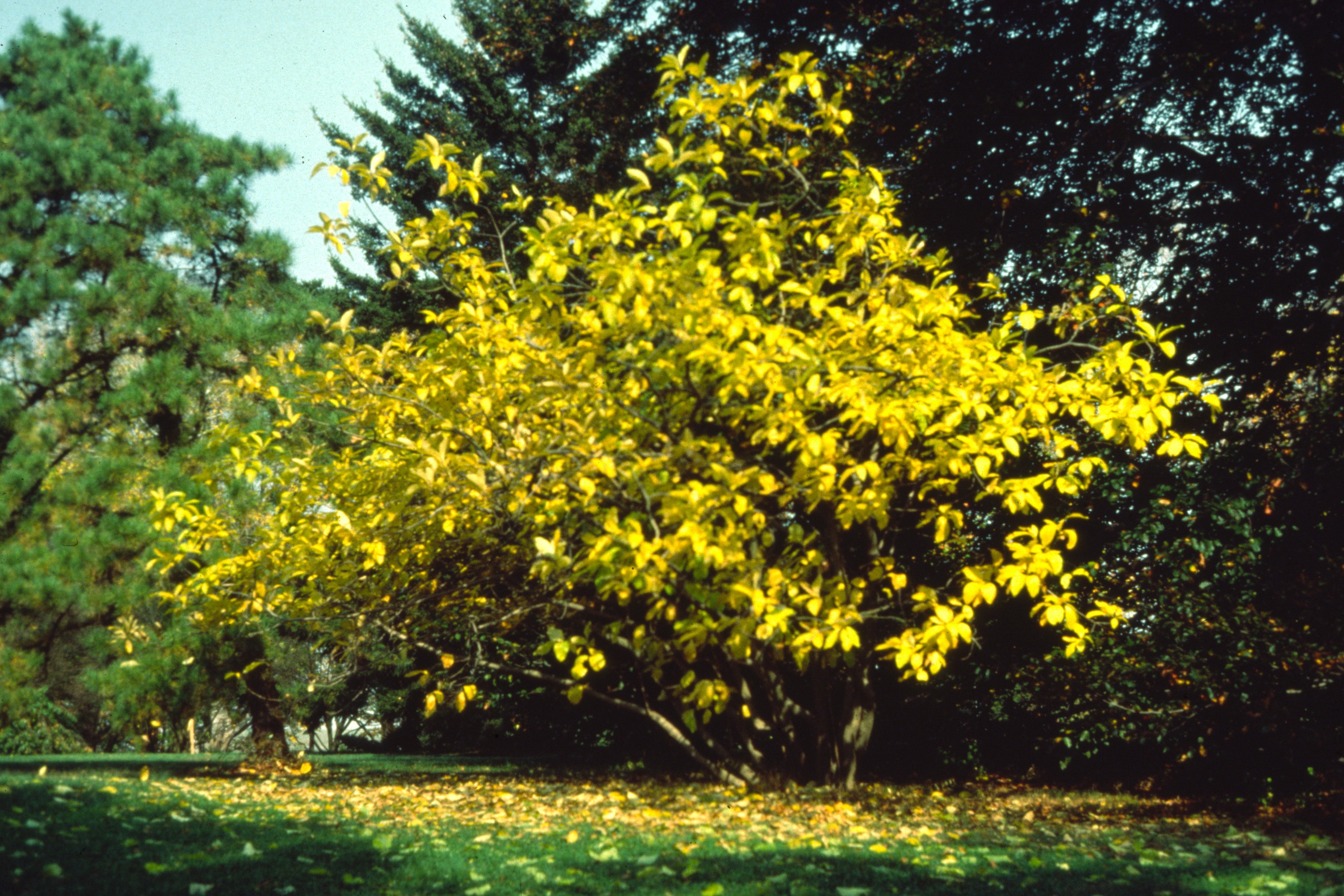
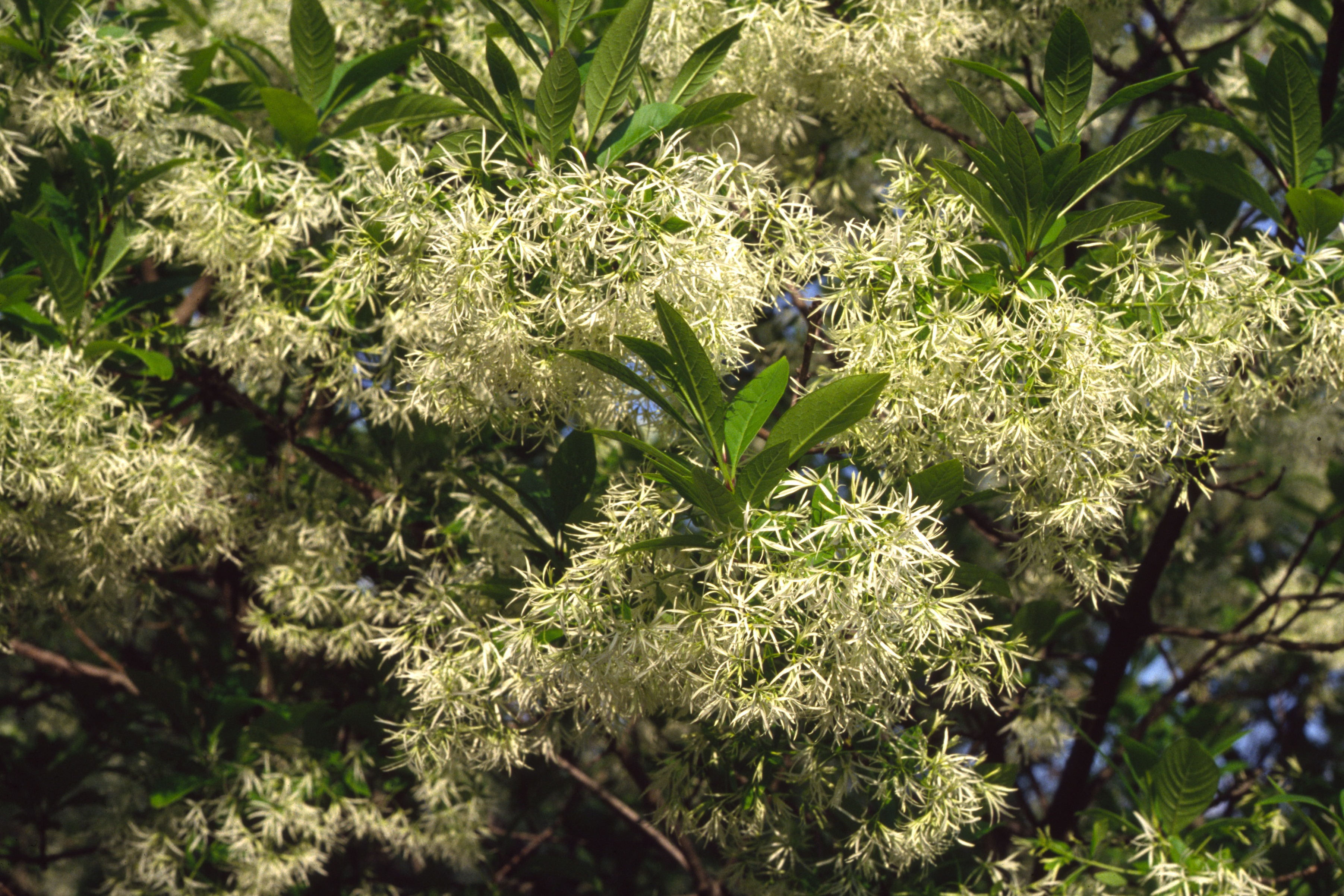
Leave a Reply